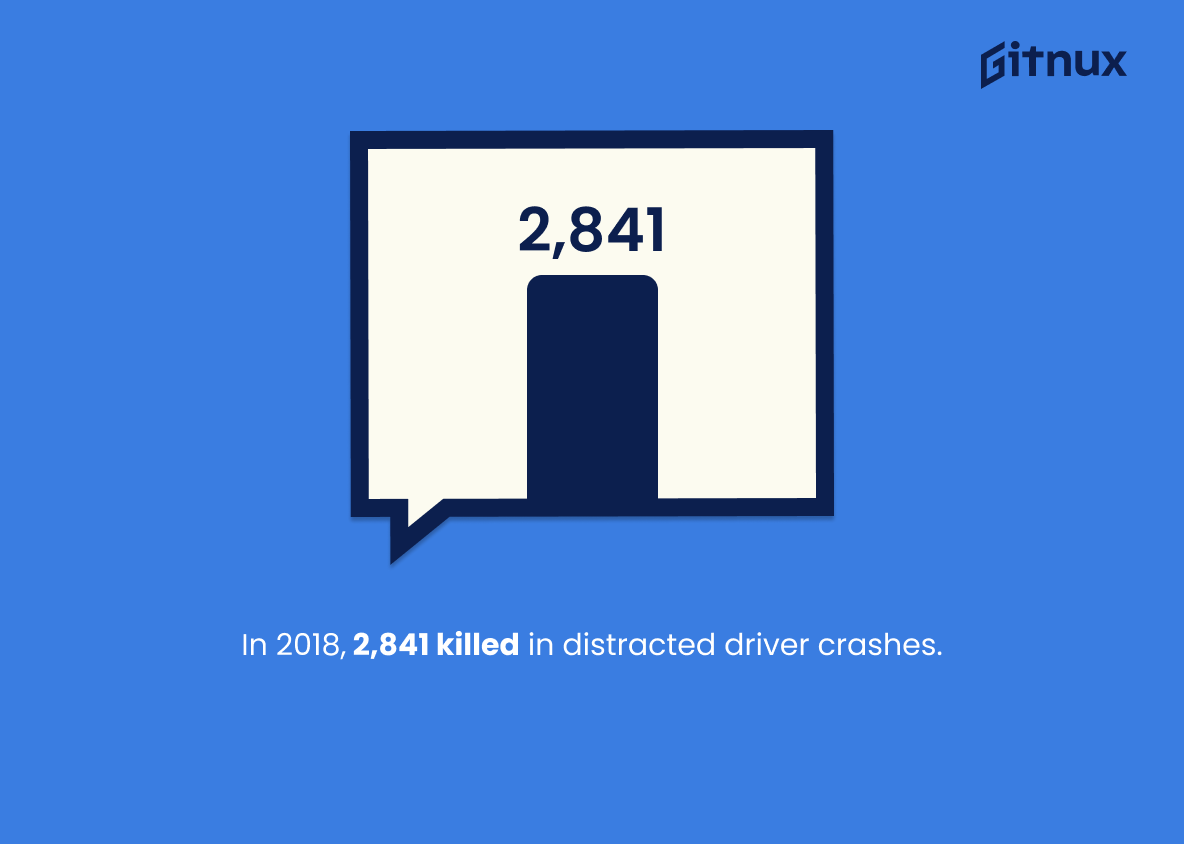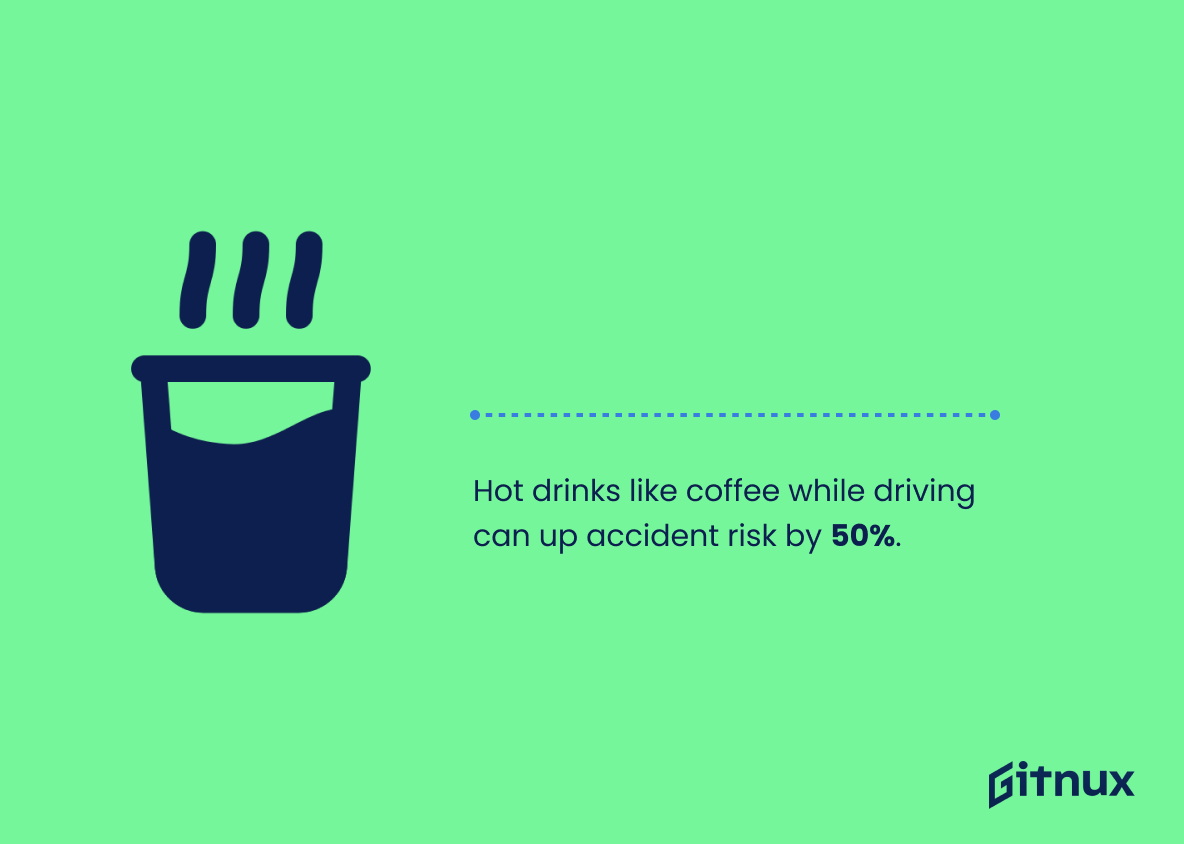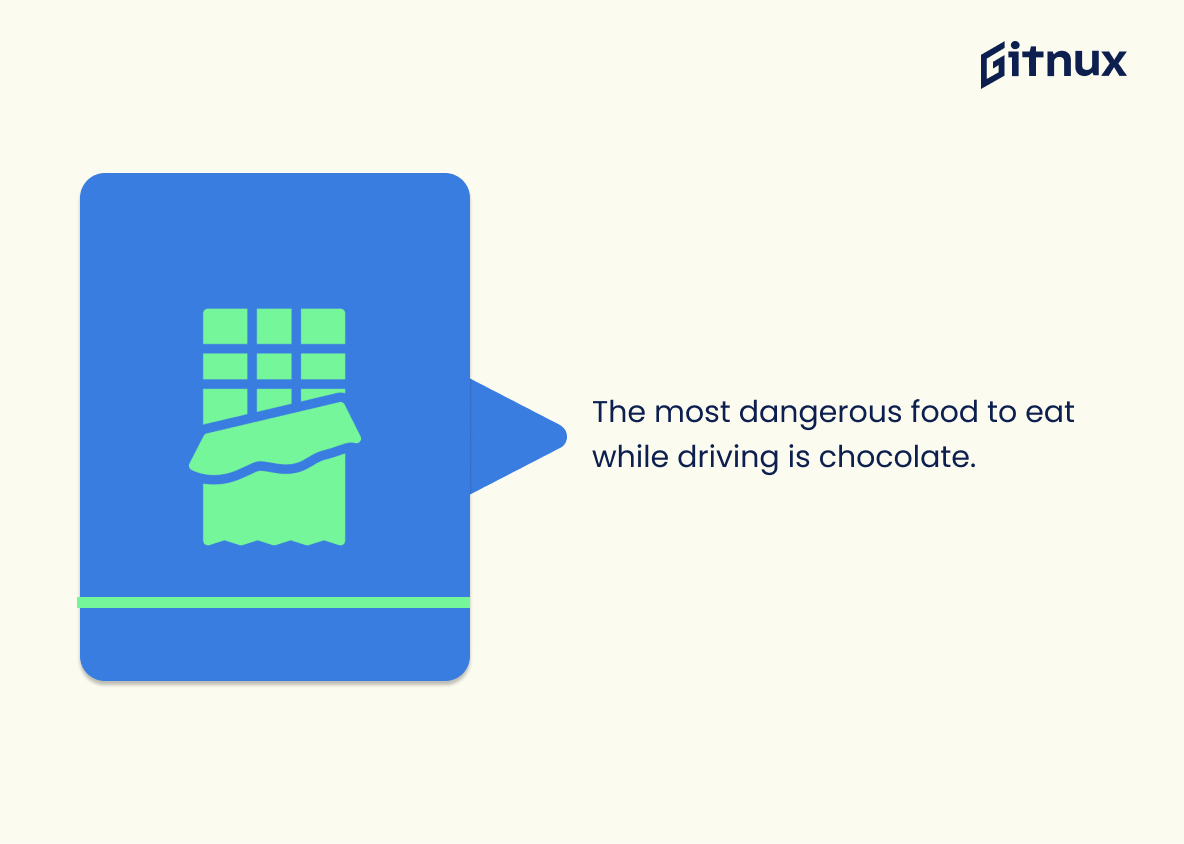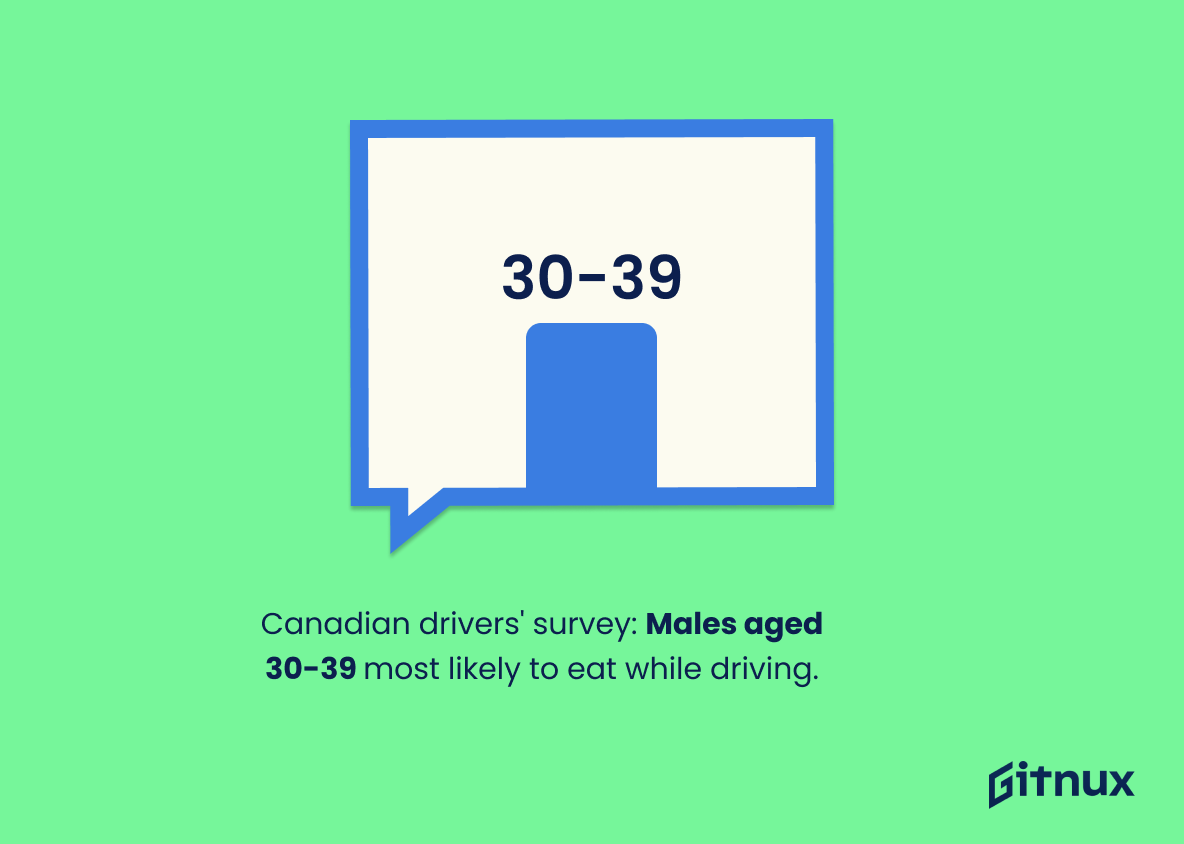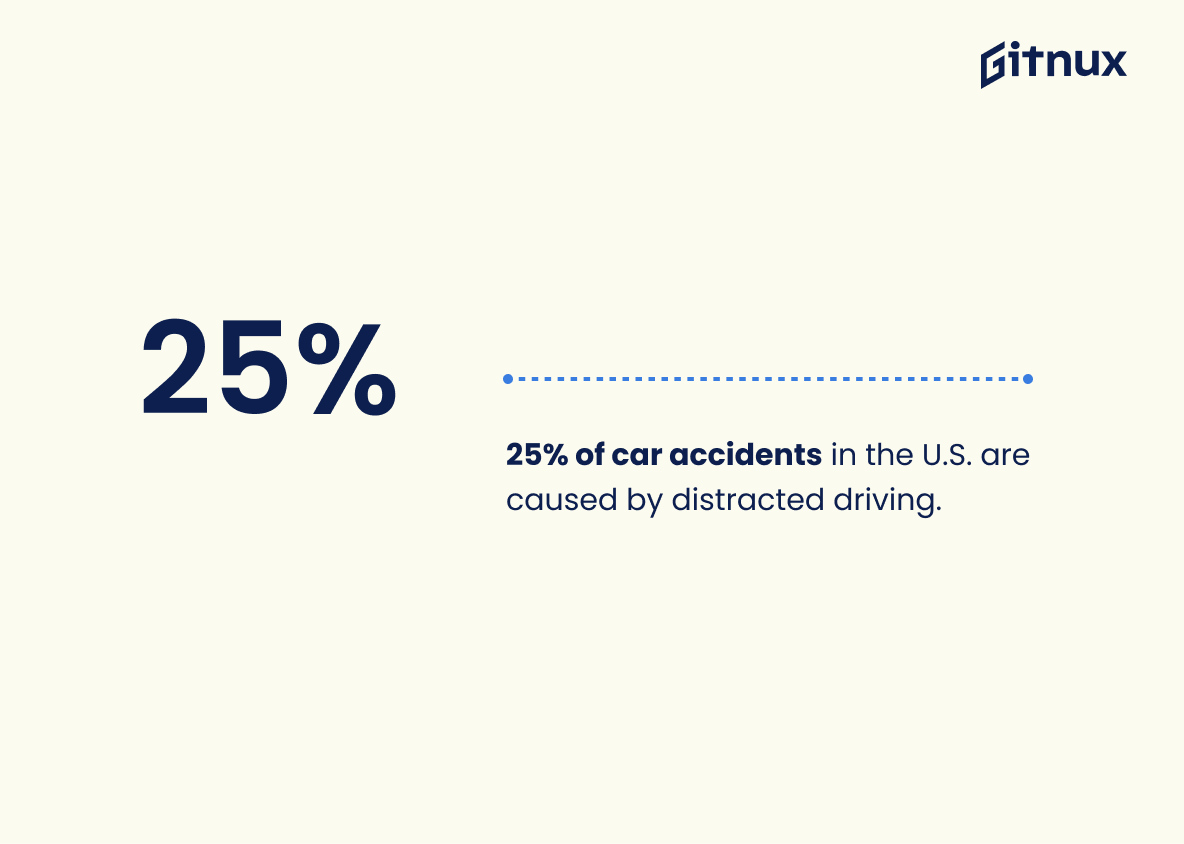Eating and drinking while driving is a dangerous habit that can have serious consequences. According to statistics, 60% of drivers admit to eating or drinking behind the wheel, which increases their risk of an accident by 80%. Distracted driving accounts for 40% of all car accidents in the U.S., with over 65% involving someone who was consuming food or beverages at the time. Eating while driving makes you 3.6 times more likely to be involved in a collision, and 48% of participants reported doing so in one study. In 2018 alone, 2,841 people were killed due to distracted drivers on American roads – nine per day. Even something as seemingly harmless as sipping coffee can increase your chances of being involved in an accident by up 50%, according to research from Express UK. A survey found that 37 percent admitted they consume food and drinks while operating a vehicle; males aged 30-39 are most likely age group do this activity according Australian stats website Tunliweb NO . Furthermore 25 %of car crashes are caused by distracted driver , 1 39 times more likely than non-distracted ones (Teletrac Navman). Finally it’s important note that some countries like United Kingdom impose fines for those caught eating behind the wheel (£100 fine plus three penalty points) . It’s clear from these facts why we should avoid eating and drinking when we’re out on the road – our safety depends upon it.
Eating And Driving Statistics Overview
In the U.S., nine people are killed and over 1,000 are injured every day because of distracted driving.
This statistic is a stark reminder of the dangers of distracted driving, and it serves as a powerful illustration of why eating and driving statistics are so important. It highlights the need for drivers to be aware of the risks associated with multitasking while behind the wheel, and it emphasizes the importance of taking steps to reduce the number of accidents caused by distracted driving.
In 2018, 2,841 people were killed in motor vehicle crashes involving distracted drivers.
This statistic is a stark reminder of the dangers of eating and driving. It highlights the fact that distracted driving, which includes eating while driving, can have deadly consequences. It serves as a warning to all drivers to be mindful of their actions behind the wheel and to avoid any activities that could take their focus away from the road.
Drinking hot drinks, like coffee, while driving can increase your risk of an accident by up to 50%.
This statistic is a stark reminder of the dangers of eating and drinking while driving. It highlights the fact that even something as seemingly innocuous as sipping a hot drink can have serious consequences, increasing the risk of an accident by a staggering 50%. This serves as a powerful warning to all drivers to avoid any kind of eating or drinking while behind the wheel.
The most dangerous food to eat while driving is chocolate.
This statistic is a stark reminder of the potential risks associated with eating and driving. It highlights the fact that even seemingly innocuous foods can be hazardous when consumed behind the wheel. By bringing attention to this issue, it serves as a warning to drivers to be mindful of what they eat while driving and to take extra precautions to ensure their safety.
In the U.K., eating while driving carries a £100 fine and up to 3 penalty points on a driver’s license.
This statistic is a stark reminder of the consequences of eating while driving. It serves as a warning to drivers that the risks of eating while driving are not worth the reward. The hefty fine and penalty points on a driver’s license are a clear indication that the U.K. takes this issue seriously and is determined to reduce the number of accidents caused by distracted driving.
Among all driving distractions, eating and drinking are ranked fifth most hazardous.
This statistic is significant in the context of a blog post about Eating And Driving Statistics because it highlights the potential danger of engaging in this activity while behind the wheel. Eating and drinking can be a major distraction for drivers, taking their attention away from the road and potentially leading to an accident. This statistic serves as a reminder to drivers to be mindful of their actions and to avoid eating and drinking while driving.
Males aged 30-39 are the most likely age group to eat while driving, according to a survey of Canadian drivers.
This statistic is a telling indication of the prevalence of eating while driving among males aged 30-39. It highlights the need for greater awareness of the dangers of eating and driving, particularly among this age group. By understanding the demographic most likely to engage in this risky behavior, we can better target our efforts to reduce the number of accidents caused by distracted driving.
25% of car accidents in the U.S. are caused by distracted driving.
This statistic is a stark reminder of the dangers of distracted driving, and it serves as a powerful illustration of why eating and driving statistics are so important. It highlights the need for drivers to remain focused on the road and to avoid any activities that could potentially take their attention away from the task of driving. Eating and driving statistics can help to further emphasize the importance of avoiding distractions while driving, and can help to reduce the number of car accidents caused by distracted driving.
Conclusion
It is clear from the statistics presented that eating and drinking while driving can be a major distraction, leading to an increased risk of accidents. Eating or drinking behind the wheel has been linked to up to 80% higher chances of being involved in a crash, with nine people killed and over 1,000 injured every day due to distracted drivers in the U.S. alone. Furthermore, chocolate was identified as one of the most dangerous foods for drivers; hot drinks like coffee were found to increase accident risks by 50%. It is also important to note that males aged 30-39 are more likely than other age groups across different countries such as Australia and Canada reported consuming food or beverages while driving at high rates (25%-48%). With all this evidence pointing towards how hazardous it can be when we eat or drink while operating vehicles on roads, it’s essential for us all take extra caution when doing so – not only for our own safety but also those around us who may become victims if we make careless decisions behind the wheel.
References
0. – https://www.express.co.uk
1. – https://www.al.com
2. – https://www.teletracnavman.com
3. – https://www.rac.co.uk
4. – https://www.caa.ca
5. – https://www.nhtsa.gov
6. – https://www.nationwide.com
7. – https://www.smartmotorist.com
8. – https://www.cdc.gov
9. – https://www.businessfleet.com

